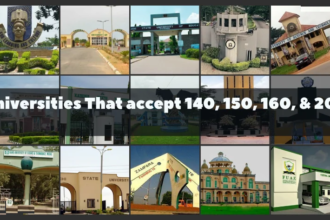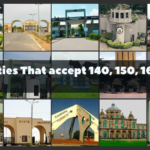*CHAPTER TWO: CONCEPT OF CONFLICT
*CHAPTER THREE: CONCEPT OF CLIMATE CHANGE
CLIMATE CHANGE AND CONFLICT IN AFRICA
Climate refers to the average weather – including temperature variances, precipitation and wind – over a select period of time. It is important to understand that the earth’s climate system evolves over time due to natural occurrences, as well as due to human influences. An example of this has led to what is often referred to as global warming, where an increased use and circulation of ‘greenhouse’ gases – which partially trap long-wave radiation to the earth’s surface – have led to a warmer earth surface. This, in turn, warms surrounding ecosystems and leads to rapidly melting glaciers, which affects all levels of the climate system. Climate change over a period of time then disrupts the normal functioning of the ecosystem that interacts with humans, and affects how they access certain vital resources for their survival.
4.1 Climate Change Hazards as Drivers for Conflict in Africa
The disruption of the normal functioning of an ecosystem due to climate change is what is referred to as climate change hazards. These include flooding due to heavy rains, erratic weather seasons and, in some areas, prolonged dry spells. What we visualise in reality is then heavy droughts and famine, unproductive farmlands due to water shortage and, in some cases like in Sudan, extended deserts. These climate change hazards or impacts are rarely – if ever – the sole cause of violent conflict. However, the increased evidence of these hazards can be implicated in all phases of the conflict cycle – from contributing to the outbreak and perpetuation of violence to undermining prospects for peace and security.
Some of these hazards are briefly discussed and an argument for how their manifestation has the potential for driving conflicts, especially in developing countries, is presented.
1. Climate Change-induced Environmental Degradation
Irregular weather patterns, influenced by heavy rainfall in some regions and strong sunshine in others, leads to environmental degradation by lowering the environmental conditions necessary for human survival. Suhrke highlights tensions in Sudan due to the expansion of the desert. According to his analysis, expansion of the desert does not manifest in a vacuum, but rather in a socio-ecological system where people are forced to seek alternative sources of livelihood. He uses the example of nomadic pastoralists, who found themselves increasingly limited and restricted in their search for pasture and water. His analysis revealed that an increase in the incidents of armed violence between pastoralist communities and farming groups was largely due to pastoralists encroaching onto farmlands for water and pasture. This was because the spreading desert linked to climate change had eradicated all the pasture and water corridors that served as buffers during the dry seasons. This observation is very similar to Saferworld’s6 view of northern Kenya, as well as Walker’s perspective on the dry stretches in Senegal, where pastoralist and farming disputes have led to violent conflicts.
2. Climate Change-induced Natural Resource Scarcity
Building on the discussion on environmental degradation, climate change does play a direct role in the shrinkage of key natural resources – for example, land and water. The IPCC’s 2007 report places special emphasis on water by looking at water systems, floods and water sources. The report recognises that water scarcity has increased – and is predicted to continue to increase in the future. This can be argued to be an outcome of unusual erratic rainfall patterns, prolonged dry spells and drought. For example, flooding as a climate change hazard reduces the amount of land available for food production and other farm-based activities, while droughts due to erratic and irregular rainfall reduce the water available to communities that depend on rain-fed agriculture and animal-rearing for their livelihoods. This can be a driver for social tensions and violence in some contexts, especially those prone to resource-based conflicts. A good example is demonstrated in the Kasese and Arua locations of northern Uganda. These two locations depend largely on rain-fed agriculture for both their food production and income-generation activities. A significant number of inhabitants from these two locations rely on large tracks of pasture and water for their pastoralist livelihoods. Empirical evidence from these regions demonstrates that, over a period of time, continued climate change leading to erratic rainfall has not only reduced the available water for irrigating farm lands, but has also hindered the expansion of pastures for the animal keepers. During the dry seasons, pastoralist communities have had to lead their animals into farmlands in search of pasture – a practice that has led to increased tensions and conflicts between the farming and pastoralist groups. Competition over these scarce resources induced by climate change has, in some cases, resulted in violent and destructive conflict.
3. Climate Change-induced Migration
A third dimension for investigating the climate change–conflict nexus is that of migration. Statistics reveal that, in 2008, 1.4 billion of the world’s inhabitants in developing countries alone relied on agriculture for their food production and income generation. Close to 98% of the same group were employed in the agricultural sector. The climate change hazards described above either lead to the destruction of land resources through flooding or desertification, on the one hand, and shrinkage of available ecological resources like water, on the other. This has a direct impact on food production and income-generation efforts, while also reducing employment opportunities for the majority of people living in developing countries. Increased food shortages and the reduction of employment opportunities as a result of diminished farm-based activities has been a cause and source of rapid outward migration in Africa. In Ghana, for example, the movement of rural communities from the drier parts of the northern region, where the rains are erratic, to the more ecologically stable south, has been argued to be a threat to existing resources in the south –leading to social tensions and conflicts. In-migration due to climate change-induced factors is now driving debates on climate change conflict issues. Increased migration generally means that populated areas simply become more populated – especially when there is a movement of people from rural areas to urban areas. The increased concentration of people leads to increased competition, both for natural resources and for government assistance
CHAPTER FIVE
CONCLUSION
*(Chapters were consciously removed)
*Only Available in Full .docx material
REFERENCES
Africa. Retrieved from https://en.wikipedia.org/wiki/Africa, accessed on 20/07/2018.
African Union (2007). Decision on Climate Change and Development in Africa, 29–30 January 2007, Doc. Assembly/AU/12 (VIII).
Barnett, J. and Adger, N. (2005). ‘Security and Climate Change: Towards an improved understanding’ paper presented at international workshop on Human Security and Climate Change, 21–23 June 2005, Oslo.
Brown, O. and Crawford, A. (2009). Climate Change and Security in Africa: A Study for the Nordic-African Foreign Ministers Meeting. International Institute for Sustainable Development. Ministry of Foreign Affairs of Denmark.
Brzoska, M. (2010). Climate Change as a Driver of Security Policy. Paper prepared for SGIR 2010, held on 9–11 September. Stockholm: Institute for Peace Research and Security Policy.
Case, M. (2006). Climate Change Impacts on East Africa. WWF-World Wide Fund for Nature, Gland, Switzerland.
Climate. Retrieved from https://en.wikipedia.org/wiki/Africa, accessed on 20/07/2018.
Conflict. Retrieved from https://en.wikipedia.org/wiki/Africa, accessed on 20/07/2018.
Drukkman, D. (1993). “An Analytical Research Agenda for Conflict and Conflict Resolution”, in Dennis J. D. Samdole and Hugo Vander Marwe (eds), Conflict Resolution Theory and Practice: Integeration and Application. Manchester and New York: Manchester University Press.
Folger, J. P. (1997). Working Through Conflict: Strategies for Relationships, New York.
Le Treut, Herve and Somerville, Richard et al. (2007). Historical Overview of Climate Change. In Climate Change 2007: The Physical Science Basis. Contribution of Working Group I to the Fourth Assessment Report of the Intergovernmental Panel on Climate Change. Cambridge: Cambridge University Press.






